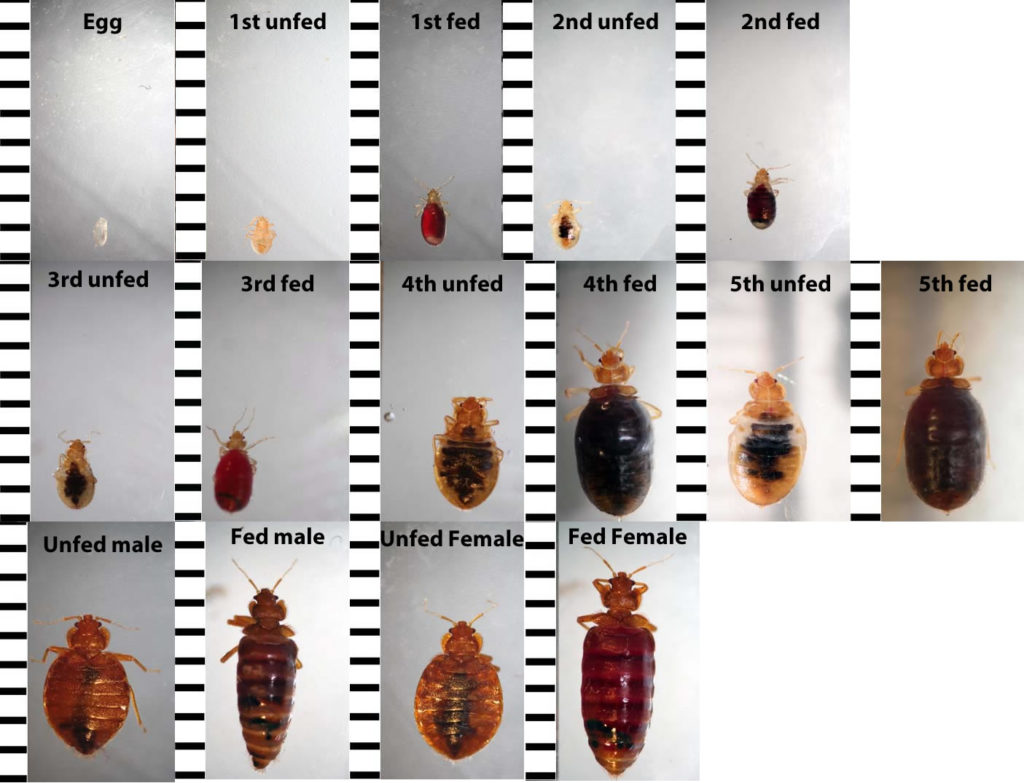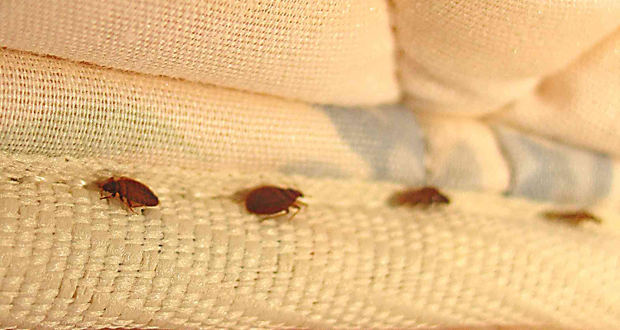Bed Bug Treatments in Florida
Exterminator Services for Fort Lauderdale and Plantation
Florida’s subtropical climate—mild winters, high humidity, and reliable warmth—draws millions of people seeking comfort, yet it likewise sustains certain pests, most notably bed bugs. These nocturnal insects feed on human blood, hiding by day in crevices like mattress seams or furniture cracks. In Fort Lauderdale, along with neighboring Plantation, bed bugs can go unseen for weeks, emerging each night to bite occupants asleep. This service page clarifies how bed bugs flourish in Florida’s environment, the signs they leave behind, and why a professional bed bug exterminator for bed bug treatments offers the most thorough way to eliminate them. By intervening quickly—once an occupant or staff sees suspicious red bites or small black dots on sheets—you safeguard your property from deep infestations, occupant restlessness, and the ongoing stress of repeated bites.
Why Bed Bugs Thrive in Florida

- Mild Winter Conditions
In colder states, sub-freezing winters can slow bed bug breeding or partially drive them into dormancy. Florida’s winter seldom dips below freezing for long, allowing bed bugs to remain active throughout the year. Indoors, occupant or caretaker heating or air conditioning ensures stable temperatures in the 65–85°F range bed bugs favor, facilitating year-round reproduction if occupant vigilance is lacking. - Frequent Travel and Movement
Areas like Fort Lauderdale—famed for beaches and bustling tourism—see occupant changes, short-term rentals, or used furniture trades that can inadvertently carry bed bugs in suitcases, folded clothing, or hidden in mattresses. A single infested item can spark a colony in a new bedroom if occupant or staff efforts—like carefully inspecting bedding edges—are absent. - Minimal Seasonal Dormancy
In many regions with severe winters, bed bug activity might wane. South Florida’s consistently mild climate imposes no such forced pause, letting bed bugs feed and breed without natural slowdowns. A few left-behind bed bugs can quickly multiply if occupant or property manager solutions fail to detect and exterminate them early. - Stable Indoor Temperatures
Indoor climate control keeps living spaces comfortable for humans—and by extension, bed bugs—eliminating the temperature extremes that hamper their survival. Without occupant-based detection—like scanning mattress seams or routine vacuuming—bed bugs easily remain well-fed in concealed corners or furniture folds until occupant complaints or bites push them to seek professional help. - Short-Term Rentals or Frequent Visitors
In metropolitan areas, occupant turnover or travelers might inadvertently introduce bed bugs that slip into new living spaces. Even careful housekeeping staff can miss the earliest signs. Swift occupant or caretaker synergy—like promptly responding to occupant-bite complaints—keeps infestations from spreading across multiple units or entire floors.
Clues of Bed Bug Infestations
- Small, Itchy Bites or Welts
Because bed bugs feed at night, occupant or staff typically awake with red, itchy bumps often clustered in lines or groups on arms, legs, or neck. Some people react strongly, while others show minimal marks. Consistent morning bites with no visible fleas or mosquitoes strongly imply bed bugs. - Dark Specks or Rusty Stains on Bedding
Crushed bed bugs might leave faint rust-colored smears on pillowcases or sheets. Additionally, bed bug feces appears as tiny black specks that dot mattress corners or accumulate near headboards. Inspecting bedding edges frequently reveals these subtle stains confirming feeding. - Shed Skins and Eggshells
Bed bugs undergo multiple molts, discarding transparent exoskeletons. Their eggs, about 1 millimeter, appear whitish and typically cluster in hidden crevices. Lifting mattress corners or checking behind frames with a flashlight may reveal these shells or eggs, confirming ongoing reproductive cycles. - Possible Musty Odor
Large bed bug populations sometimes generate a subtle, sweetish or musty aroma from pheromones. Smaller infestations may not reach a detectable odor, so occupant or caretaker should rely primarily on droppings, exoskeletons, or occupant bites for validation. - Live Bed Bugs
Adult bed bugs measure roughly 5–7 millimeters, with flattened, oval bodies that turn reddish-brown after feeding. Nymphs are tinier and paler. Shining a flashlight on bed frames or flipping couch cushions might expose them scrambling away from the light if occupant or caretaker rummages in their daytime hiding spots.
Consequences of Neglecting Bed Bugs
- Rapid Reproduction
A single fertilized female bed bug can deposit multiple eggs daily, hatching in about two weeks. Under the steady warmth of Florida conditions, a small infiltration balloons into dozens or hundreds feeding nightly if occupant or staff do not respond early. - Anxiety and Sleep Loss
Sharing a living space with biting insects triggers occupant stress. Some people fear bedtime or endure ongoing itchiness, overshadowing daily routines. Eliminating bed bugs promptly restores occupant confidence in restful nights and peaceful routines. - Potential Spread to Neighbors
In multi-unit properties—like apartments or short-term rentals—bed bugs travel along wiring or occupant belongings if occupant-based solutions remain partial. Coordinated building checks halt expansions across hallways or entire complexes, preventing occupant dissatisfaction or brand damage.
Reputational Damage
Especially for short-term rentals, hotels, or property managers, occupant sightings of bed bugs can prompt negative reviews and occupant trust issues if unaddressed swiftly. Quick occupant or staff detection and discreet extermination keep occupant satisfaction high.

Why a Professional Exterminator Helps
- Comprehensive Detection
A bed bug exterminator methodically examines mattresses, box springs, upholstered furniture, baseboards, and behind headboards, identifying droppings or eggs occupant might miss. Confirming bed bug presence (rather than fleas or roaches) clarifies which treatment path suits best. - Eliminating All Life Stages
Bed bugs exist as eggs, nymphs, and adults. Killing only adults remains ineffective if eggs stay untouched. Professionals integrate multi-step methods—like steam, insect growth regulators, or heat—that kill bed bugs across each stage, preventing re-infestation from new hatches. - Targeted Chemical Use
Over-the-counter foggers can drive bed bugs deeper into walls, saturating occupant areas unnecessarily. Exterminators apply insect growth regulators or specific sprays exactly where bed bugs dwell—mattress seams, furniture folds, or cracks—sparing occupant or pet overexposure while guaranteeing lethal coverage. - Follow-Up and Ongoing Checks
Because bed bug eggs hatch about two weeks after being laid, occupant or staff re-checks ensure newly emerged nymphs also face lethal contact. If occupant sightings persist—like fresh bites or black specks—spot treatments finalize occupant relief, guaranteeing no hidden pockets remain.
Methods for Bed Bug Treatments
- Inspection and Mapping
Professionals systematically lift mattresses, remove cushions, and shine flashlights into cracks or corners, documenting droppings or shells. Determining if occupant sightings center around one bedroom or multiple floors influences whether occupant-based vacuuming plus localized treatments suffice or if entire-building heat solutions are necessary. - Vacuuming and Steam
Vacuuming surfaces pulls up adult bugs, droppings, or eggs, reducing the population. Occupants discard vacuum contents in sealed plastic offsite. Steam—extremely hot—penetrates deeper into upholstery, killing bed bugs or eggs on contact. Used with insecticidal approaches, vacuuming and steam drastically cut immediate numbers. - Insect Growth Regulators (IGRs)
Spraying or dusting baseboards, mattress seams, or furniture edges with IGRs blocks nymph development. Bed bugs crossing these zones cannot mature or reproduce. Occupants typically wait for dryness, returning quickly to normal routines while eggs or newly hatched bed bugs face lethal obstacles. - Heat Treatments
For more extensive or multi-room infestations, raising indoor temperatures above ~120°F can exterminate bed bugs and eggs behind walls, inside electronics, or within furniture. Occupants vacate briefly while specialized heaters saturate the home. Once temperatures drop to normal, they return to a bed bug–free environment. - Mattress Encasements and Interceptors
Sealing mattresses or box springs in protective covers traps any concealed bed bugs, ultimately starving them. Interceptors placed under bed legs catch bed bugs traveling to or from bedding. Occupants can easily monitor these devices for new bed bug activity, ensuring no leftover clusters thrive undetected.
Serving Fort Lauderdale and Plantation
Fort Lauderdale: Known for beaches, tourism, and occupant turnover in short-term rentals, Fort Lauderdale can inadvertently spread bed bugs through suitcases or secondhand items if occupant housekeeping or building-level detection is minimal. Occupants scanning bedding edges or feeling suspicious bites plus a professional approach hamper expansions across multi-floor properties or older homes.
Plantation: A vibrant suburban area bridging older developments with new expansions, Plantation might see bed bugs introduced by occupant transitions, used furniture trades, or hidden eggs in personal belongings. Occupants verifying suspicious black dots on sheets and vacuuming regularly hamper infiltration, while professional synergy ensures thorough extermination behind walls or in attic corners.

Why Our Bed Bug Treatments Excel
- Florida-Adapted Expertise
Because southwestern Florida rarely experiences bed bug–slowing cold, occupant synergy—like scanning secondhand goods or vacuuming corners—plus robust multi-step treatments—like steam, insect growth regulators, or heat—cover bed bugs from egg to adult, halting cycles in year-round warmth effectively. - Precision and Minimal Chemical Contact
We position insecticidal or growth regulator applications precisely where bed bugs hide—mattress seams, furniture folds—limiting occupant or pet overexposure. Occupants typically wait until dryness or recommended intervals for chemical settling, resuming daily life quickly while bed bugs face lethal surfaces. - Preventative Occupant Steps
Removing current bed bugs solves the immediate crisis. Occupant synergy—like encasing mattresses, storing personal items off floors, or verifying secondhand furniture for black specks—prevents new bed bug introductions. This occupant plus professional approach cements stable, pest-free environments. - Follow-Up and Monitoring
Because bed bug eggs hatch in about two weeks, occupant re-checks or scheduled visits confirm no leftover nymph wave emerges. If occupant bites or black spots on bedding reappear, additional targeted treatments finalize occupant confidence, guaranteeing no hidden cluster endures behind furniture or within walls.
Next Steps
Noticing small red bites each morning, discovering dark specks on pillowcases, or spotting tiny insects scurrying along mattress seams? Contact us to learn more or schedule your service. Our bed bug exterminator measures in Fort Lauderdale and Plantation destroy bed bugs across all life stages—egg, nymph, and adult—so you can enjoy restful nights and occupant comfort. By acting quickly, you prevent deeper infiltration spanning multiple rooms, occupant distress, or the frustration of repeated laundering cycles.
Through occupant housekeeping—like vacuuming carpets, laundering bed linens on hot cycles, isolating suspicious items—and specialized solutions—like insect growth regulators, steam, or entire-building heat—bed bugs meet lethal contact wherever they hide. Freed from these nocturnal feeders, southwestern Florida families or businesses savor the region’s mild climate and coastal allure without the stress of unseen bed bugs lurking in mattress seams or behind headboards.
Sustaining a Bed Bug–Free Property
- Inspect Secondhand Items Thoroughly: Examine used beds, couches, or décor for black spots, eggs, or live bed bugs before bringing them inside. If uncertain, treat or vacuum them outdoors.
- Frequent Laundering of Bedding: Washing sheets, pillowcases, and blankets on hot cycles kills stray bed bugs or eggs. Drying on high heat extends this lethal effect, ensuring no insects survive.
- Regular Vacuuming: Weekly vacuuming of floors, rugs, or upholstered furniture disrupts bed bug life cycles by collecting eggs or nymphs. Discard vacuum contents in sealed plastic offsite.
- Mattress Encasements: Sealing mattresses and box springs in bed bug–proof covers denies bed bugs a prime nesting location. Checking these covers periodically for droppings ensures occupant awareness of any renewed bed bug movement.
- Post-Travel Checks: Returning from hotels or short-term rentals, occupant can launder clothes on hot settings and vacuum suitcases thoroughly to eliminate potential hitchhiking bed bugs.
By merging occupant diligence—like scanning corners for droppings or vacuuming bedding edges—and multi-pronged professional treatments—such as insect growth regulators, steam, or entire-room heat—bed bugs find no stable foothold at any life stage. Even in Florida’s mild winter, which seldom hampers their breeding, occupant synergy plus specialized pest control stymies bed bug expansions, preserving occupant tranquility and property cleanliness.
